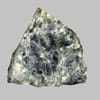Dacite and Tuff
Definition
Definition
Dacite is a volcanic igneous rock which is rintermediate in composition between andesite and rhyolite
Tuff is a type of rock made of volcanic ash ejected from a vent during a volcanic eruption
History
Origin
Romania and Moldova, Europe
Italy
Discoverer
Unknown
Unknown
Etymology
From Dacia, a province of the Roman Empire which lay between the Danube River and Carpathian Mountains where the rock was first described
From a Latin word tophous then in Italian tufo and finally tuff
Class
Igneous Rocks
Igneous Rocks
Sub-Class
Durable Rock, Soft Rock
Durable Rock, Medium Hardness Rock
Family
Group
Volcanic
Volcanic
Other Categories
Fine Grained Rock, Medium Grained Rock, Opaque Rock
Fine Grained Rock, Opaque Rock
Texture
Texture
Aphanitic to Porphyritic
Clastic, Pyroclastic
Color
Bluish - Grey, Brown, Grey, Light to Dark Grey
Brown, Grey, Yellow
Maintenance
Less
More
Durability
Durable
Durable
Water Resistant
No
Yes
Scratch Resistant
No
Yes
Stain Resistant
No
No
Wind Resistant
No
No
Acid Resistant
No
No
Appearance
Vesicular
Dull, Vesicular and Foilated
Uses
Architecture
Interior Uses
Decorative Aggregates, Entryways, Interior Decoration
Decorative Aggregates, Entryways, Flooring, Homes, Interior Decoration
Exterior Uses
As Building Stone, Paving Stone, Garden Decoration
As Building Stone, As Facing Stone, Garden Decoration, Office Buildings, Paving Stone
Other Architectural Uses
Curbing
Curbing
Industry
Construction Industry
As Dimension Stone, Construction Aggregate, for Road Aggregate, Landscaping
Building houses or walls, Construction Aggregate
Medical Industry
Not Yet Used
Not Yet Used
Antiquity Uses
Artifacts
Artifacts, Monuments, Sculpture, Small Figurines
Other Uses
Commercial Uses
Commemorative Tablets, Creating Artwork
Creating Artwork
Types
Types
Footwall Dacite, Hanging wall Dacite, Tuff and Biotite Dacite
Welded tuff, Rhyolitic tuff, Basaltic tuff, Trachyte tuff, Andesitic tuff and Ignimbrite.
Features
Host Rock for Lead, Is one of the oldest rock
Always found as volcanic pipes over deep continental crust
Archaeological Significance
Monuments
Not Yet Used
Used
Famous Monuments
Not Applicable
Easter Island in the Polynesian Triangle, Pacific Ocean
Sculpture
Not Yet Used
Used
Famous Sculptures
Not Applicable
Data Not Available
Pictographs
Used
Used
Petroglyphs
Used
Used
Figurines
Not Yet Used
Used
Fossils
Absent
Absent
Formation
Formation
Dacitic magma is formed by the subduction of young oceanic crust under a thick felsic continental plate. Further, the Oceanic crust is hydrothermally altered as quartz and sodium are added.
Tuff is formed when large masses of ash and sand which are mixed with hot gases are ejected by a volcano and avalanche rapidly down its slopes.
Composition
Mineral Content
Amphibole, Apatite, Biotite, Feldspar, Garnet, Hornblade, Magnetite, Plagioclase, Pyroxene, Quartz, Zircon
Calcite, Chlorite
Compound Content
Ca, Fe, Potassium Oxide, Mg, Potassium, Silicon Dioxide
Hydrogen Sulfide, Sulfur Dioxide
Transformation
Metamorphism
Yes
Yes
Types of Metamorphism
Burial Metamorphism, Cataclastic Metamorphism
Burial Metamorphism, Cataclastic Metamorphism, Contact Metamorphism, Hydrothermal Metamorphism, Impact Metamorphism, Regional Metamorphism
Weathering
Yes
Yes
Types of Weathering
Biological Weathering, Chemical Weathering, Mechanical Weathering
Biological Weathering, Chemical Weathering, Mechanical Weathering
Erosion
Yes
Yes
Types of Erosion
Chemical Erosion
Chemical Erosion, Coastal Erosion, Glacier Erosion, Sea Erosion, Water Erosion, Wind Erosion
Properties
Physical Properties
Hardness
2-2.25
4-6
Grain Size
Medium to Fine Coarse Grained
Fine Grained
Fracture
Conchoidal
Uneven
Streak
White
White
Porosity
Less Porous
Highly Porous
Luster
Subvitreous to Dull
Vitreous to Dull
Compressive Strength
Not Available
243.80 N/mm2
5
Cleavage
Perfect
Not Available
Toughness
Not Available
Not Available
Specific Gravity
2.86-2.87
2.73
Transparency
Translucent
Opaque
Density
2.77-2.771 g/cm3
1-1.8 g/cm3
Thermal Properties
Specific Heat Capacity
0.92 kJ/Kg K
10
0.20 kJ/Kg K
25
Resistance
Heat Resistant, Impact Resistant, Pressure Resistant, Wear Resistant
Heat Resistant, Impact Resistant, Pressure Resistant, Wear Resistant
Reserves
Deposits in Eastern Continents
Asia
Not Yet Found
Afghanistan, Armenia, Azerbaijan, Burma, Cambodia, China, India, Indonesia, Iran, Japan, Malaysia, Mongolia, Nepal, North Korea, Pakistan, Saudi Arabia, Syria, Taiwan, Thailand, Turkey, Vietnam, Yemen
Africa
Not Yet Found
Cameroon, Cape Verde, Eritrea, Ethiopia, Kenya, Libya, Madagascar, Nigeria, Rwanda, South Africa, Sudan, Uganda
Europe
France, Greece, Romania, Scotland, Spain
France, Georgia, Germany, Greece, Iceland, Italy, Netherlands, Poland, Portugal, Spain, United Kingdom
Others
Not Yet Found
Antarctica, Hawaii Islands
Deposits in Western Continents
North America
USA
Canada, Costa Rica, Panama, USA
South America
Argentina, Bolivia, Chile, Colombia, Ecuador, Peru, Venezuela
Argentina, Bolivia, Brazil, Chile, Ecuador, Paraguay
Deposits in Oceania Continent
Australia
New Zealand, South Australia, Western Australia
Central Australia, Western Australia
All about Dacite and Tuff Properties
Know all about Dacite and Tuff properties here. All properties of rocks are important as they define the type of rock and its application. Dacite and Tuff belong to Igneous Rocks.Texture of Dacite is Aphanitic to Porphyritic whereas that of Tuff is Clastic, Pyroclastic. Dacite appears Vesicular and Tuff appears Dull, Vesicular and Foilated. The luster of Dacite is subvitreous to dull while that of Tuff is vitreous to dull. Dacite is available in bluish - grey, brown, grey, light to dark grey colors whereas Tuff is available in brown, grey, yellow colors. The commercial uses of Dacite and Tuff are commemorative tablets, creating artwork.
|
||
|
||
|










